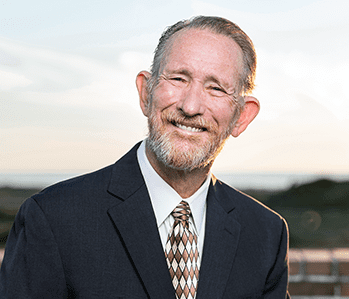
The purpose of this blog is to stimulate thought and discussion about important issues in healthcare. Opinions expressed are those of the author and do not necessarily express the views of CMDA. We encourage you to join the conversation on our website and share your experience, insight and expertise. CMDA has a rigorous and representative process in formulating official positions, which are largely limited to bioethical areas.
App Blogs, Belief, and Christian Living
Who Do You Believe, and Why?
August 10, 2023
by Robert E. Cranston, MD, MA (Ethics)
All dogs are animals; all animals have four legs; therefore, all dogs have four legs. While this example technically fits the definition of a syllogism, it is clearly faulty since the second premise is not true, all animals do not have four legs, thus the conclusion is faulty. For a syllogism to function correctly, there must be two given premises, each which share a term with the conclusion, and share a common or middle term not present in the conclusion (according to the New Oxford American Dictionary). For the conclusion to be true, each of the premises must be true.
When we are attempting to think rationally in appropriate syllogistic lines, for us to draw accurate conclusions from news items we see on television, in the news and on social media, the information we receive as the input to our process must be accurate, and to a great extent must be complete. Half-truths are the most dangerous lies. Blatant lies are more easily detected and dismissed. It is helpful to understand the underlying bias of the source. We all have presuppositions. What are theirs?
When journalists sympathetic to a cause, say Antifa for instance, are monitoring a protest, whether it will be termed a “mainly peaceful demonstration” or a “violent insurrection” will depend on who is doing the reporting (Andy Ngo, Unmasked, Center Street, 2021). Even pictures lie. Video and still photos can be handpicked, edited skillfully or even fraudulently manipulated to tell the story the writer wishes to convey. Additionally, much of so-called reporting is opinion unsubstantiated by facts or supported only with propaganda factoids.
So, there’s the rub! Where can we get accurate, complete information? At one point in our history, most Americans thought they could trust the evening news with Walter Cronkite’s famous, “And that’s the way it is….” With multiple news sources, including internet news feeds, and with every source with its implicit or explicit bias, how do we find clean information today?
Social media algorithms drive information to the client that is most likely to garner the readers’ attention. If you have been following partisan news stories, the artificial intelligence (AI) of the algorithms will continue to send ads and stories your way that you are likely to look at longer than contrarian positions you would scroll quickly past. Soon, the only opinions and articles coming your way are ones you will likely agree with and spend more time reading. Most of us join online information and chat groups that reflect our affinities. We are effectively living in our own private echo chambers.
As if things weren’t tough enough, when we add in fake news, including disinformation, misinformation and viral hoaxes, the truth is even harder to discern. This has led to fact checking and integrity-confirming organizations, but these are often heavily slanted politically as well. The Southern Poverty Law Center sounds noble, but it is so progressive it has labeled Alliance Defending Freedom, Family Research Council, Family Research Institute and other Christian organizations as hate groups, primarily because they follow Scripture as to the definitions of marriage and family. A number of fact checking sites, including Snopes’ Field Guide to Fake News Sites and Hoax Purveyors, NPR, PolitiFact and FactCheck.org, can be helpful, but only if one remains cognizant of the political slant of these reviewers.
Most of what I have detailed thus far is old news, so to speak. It’s easy to throw up one’s hands in despair, and say, “What’s the use? Maranatha, even so, come Lord Jesus!” but Scripture doesn’t really give us this option. We are to occupy until He comes, and we are to stay engaged as salt and light, as watchers on the wall.
This is a complicated topic with no simple solutions, but I offer a few suggestions:
- Always compare what you are hearing with what you know to be true. When you absolutely know something for a fact, it’s a great place to start your process.
- There is a God.
- We are not Him.
- Scripture is “…given by inspiration of God, and is profitable for doctrine, for reproof, for correction, for instruction in righteousness…” (2 Timothy 3:16, NKJV).
- Christ is returning. In the meantime, government or social policies will not solve all our problems.
- Search for the most reliable sources you can find, and then begin your information quests there. The Colson Center, Epoch Times and my favorite Christian publications serve as good starting points for me.
- If something looks incredible, it probably is. Check with the fact checkers of your choice.
- Bait and switch headlines are a convenient way to grab the readers’ attention, but if you only read the headlines, you will find they often are not substantiated by the article itself. Sensational headlines draw you in.
- Be willing to read from sources you know will not have the same worldview as you. They will seldom convince you, but at least you will be able to understand why they say what they are saying. It’s too easy to assess those from a different worldview as evil or ignorant. Labeling doesn’t help communication, but understanding what they believe does.
- Always compare what is being said to what Scripture says. No matter how many secular sources tell you we arrived here by random chance and unguided happenstance, we know from Scripture this is false. Don’t let an ingenious argument dissuade you from what you know to be true scripturally.
- Keep an open mind on things about which you don’t have all the information, and don’t go along with the loudest voices or the largest crowds. Albert Einstein once said, “What is right is not always popular and what is popular is not always right.”
- At times you will not believe the things you should, and then you will wrongly believe things you shouldn’t. Your goal should be to do fewer of both. James 1:5-6 reassures us that if we ask God for wisdom, He will give it to us, and He will do so generously if we believe and don’t doubt.


Excellent commentary on values and Social media.
Keep up the good fight!